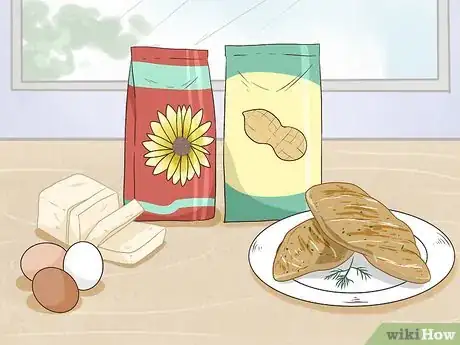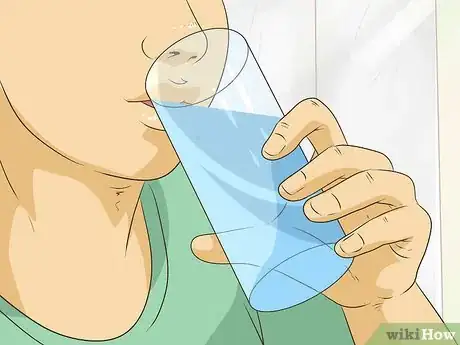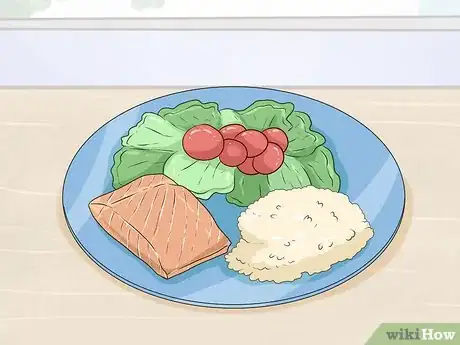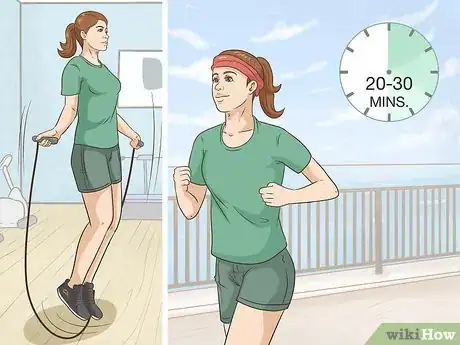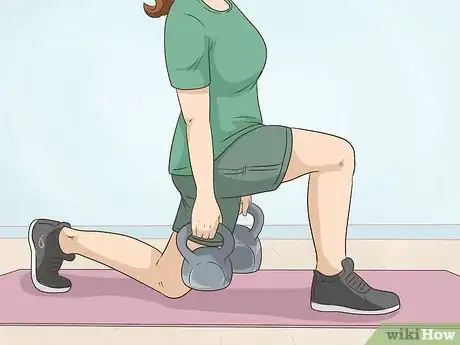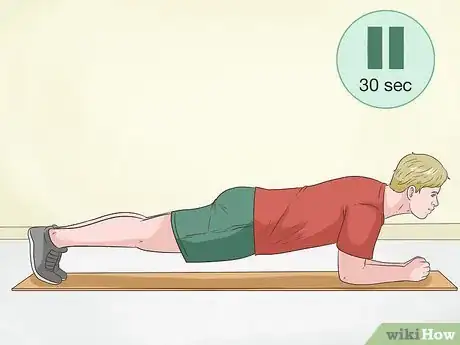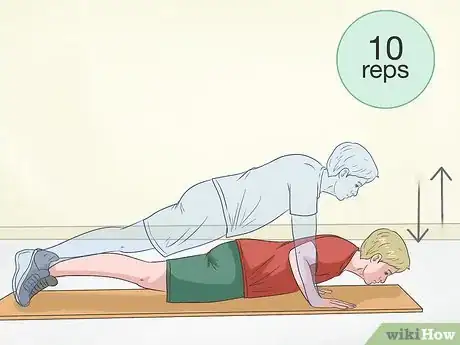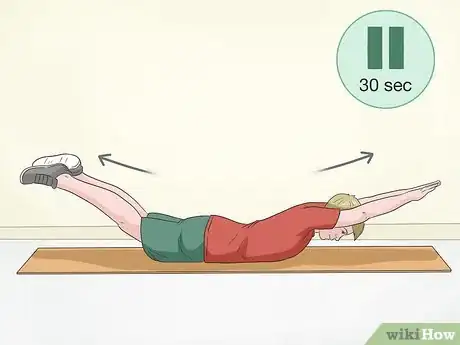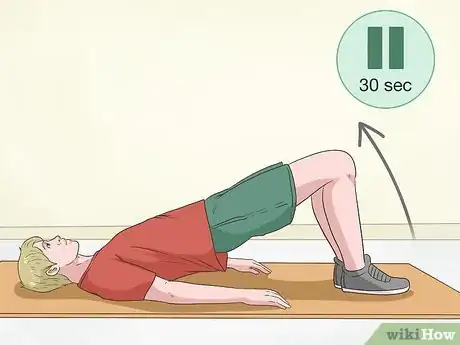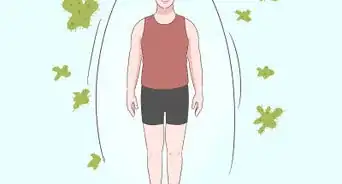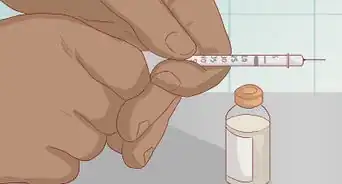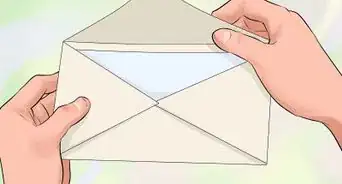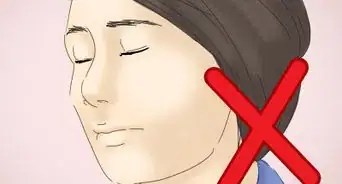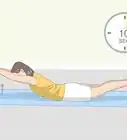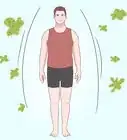This article was co-authored by Francisco Gomez. Francisco Gomez is the Head Coach at the FIT Potato Gym, a training gym established in 2001 in the San Francisco Bay Area. Francisco is a former competitive runner who helps endurance athletes train for major marathons like the Boston Marathon. Francisco specializes in Injury Rehab, Flexibility, Marathon Training, and Senior Fitness. He has a B.S. in Nutrition and Exercise Physiology & Running.
There are 15 references cited in this article, which can be found at the bottom of the page.
This article has been viewed 23,495 times.
Reducing your lower back fat is all about altering your diet while strengthening your body. While you can't lose weight in just one specific part of your body, losing weight overall will help diminish your lower back fat. Aim to eat lots of leafy greens and lean proteins, and keep your portions small. Create an exercise routine made up of cardio and strength training to get the best results. By sticking to a workout plan and choosing healthy foods, you're much more likely to see improvements.
Steps
Choosing the Right Diet
-
1Focus on lean proteins to help you lose the back fat. These include meats like fish and chicken, as well as lean steak and pork. For non-meat options, eat eggs, beans, lentils, and tofu.[1]
- Shrimp and salmon are popular fish proteins.
- Nuts and seeds are perfect proteins for snacking.
- How much protein you should eat each day depends on your body weight. It's recommended that you eat 0.36 grams of protein per pound of body weight, or 0.8 grams of protein per kilogram.
-
2Choose fruits and vegetables to provide you with needed nutrients. Leafy greens are very helpful when it comes to losing weight—the darker the green the better. While almost all of your meals should have a vegetable, add in some healthy fruits like blueberries, strawberries, or bananas too.[2]
- Pick out dark leafy greens like spinach and kale, or other veggies like broccoli, asparagus, carrots, or sweet potatoes.
- Eat 4 servings of fruit each day and 5 servings of vegetables.
Advertisement -
3Stay hydrated by drinking plenty of water every day. Drinking enough water is just as important as eating healthy foods. Try to drink a glass of water right after you wake up, and continue staying hydrated throughout the day, especially before and after a workout.[3]
- Fill a water bottle with water and bring it around with you during the day to remind yourself to stay hydrated.
-
4Balance out your meals so they’re proportionally healthy. This will help you cut down on your calorie intake so that you’re not overeating. When you’re preparing a meal, try to have half your plate filled with vegetables. You can fill a fourth of the plate with whole grains like whole-wheat bread or brown rice, and the last fourth with your protein.[4]
- For example, you might have a meal made up of half spinach, one-fourth whole-wheat pasta, and one-fourth chicken.
-
5Avoid junk food and sweets. Sugar and unhealthy fatty foods are going to increase your lower back fat, not reduce it. Try to cut out foods like chips, fried foods, sugary drinks, and sweet desserts like cakes and cookies.[5]
- Avoid foods that have lots of high-fructose corn syrup and opt for more natural ingredients instead.
Planning an Exercise Routine
-
1Target your backside and core when you’re choosing exercises. Since this is where your lower back fat is, the exercises you do should focus on this area. Whenever you’re doing an exercise, see if you can feel the area of your body that it’s targeting, making sure that your lower back or core is engaged.[6]
-
2Work out at least 3-4 times a week. It’s recommended that you exercise for at least 30 minutes every day, but if you're super busy, plan to do a full workout at least 3 times a week. If you’re trying to get rid of lower back fat, you’ll need to set aside at least 30 minutes or longer during your day to do cardio and strength exercises.[7]
- Join a gym to give you access to more equipment, or recruit a workout buddy to get you motivated to work out each day.
-
3Do cardio to start burning calories. Cardio is a great way to get your body moving and your heart pumping so you can begin targeting that lower back fat. Do roughly 20-30 minutes of cardio to feel its full effects, choosing to do activities like run, use the elliptical, or climb stairs.[8] [9]
- Other great cardio options include swimming, cycling, and jumping rope.
- If you’re just starting out, aim to do at least 15 minutes of cardio.
- Try HIIT, high-intensity interval training, to burn calories faster and lose fat.
-
4Add targeted strength exercises to your routine. While cardio is great for burning calories and getting you moving, you also need to be strengthening your muscles by doing area-specific exercises. Planks and push-ups are popular exercises when it comes to losing lower back fat, but there are tons of different options that will target the specific area you want to focus on.[10]
- You might create a routine of doing 5 different strength exercises, and three reps of each of them.
- Look online to find lots of strength exercises, narrowing down your search by typing, “exercises that reduce lower back fat” into the search bar.
-
5Stick to your routine and be patient to see results. If you only workout and eat healthy foods sporadically, it’s going to be much harder to get rid of the lower back fat. Create a schedule and stick to it as much as possible so that you’re able to notice changes.[11]
- For example, your schedule might be that Mondays-Thursdays are when you work out for 40 minutes before work or school.
Practicing Exercises
-
1Do a plank to strengthen your core and back. Place your palms on the floor so that they’re directly under your chin. Situate your feet so that your toes are touching the ground, and flatten your back so it creates one straight line as you hold yourself up. Try to hold this pose for 30 seconds before relaxing.[12]
- You can also rest your forearms on the ground, holding yourself up this way instead.
-
2Practice push-ups for a stronger back. Situate your palms face down on the ground right below your chin. Stretch your legs out so they’re straight while you hold yourself up using your arms and toes. Extend your arms so they’re straight, and then slowly lower yourself closer to the floor until your body is parallel to the ground. Continue pushing your body up and then slowly down to repeat the push-ups.[13]
- When you’re starting out, try doing 10 push-ups each day, and slowly add more when you’re able to do all of them in good form.
- As you get stronger, you might aim to do 25-50 push-ups each day.
-
3Exercise your lower back by doing side crunches. Lay on your back with your knees bent. Lower both of your bent knees to one side, and place your hands behind your head. Keeping your knees to one side of your body, start doing small crunches by lifting your upper body upwards and to the side before lowering yourself back down.[14]
- Try doing 3 sets of 10 side crunches.
- Don’t forget to switch sides, rotating your legs to the other side before repeating the same number of side crunches.
-
4Work your lower back by doing the superman pose. Lay on your stomach and stretch your arms and legs out straight. Lift all of your arms and legs off of the floor so that your stomach is the only thing touching the ground. Try to hold this pose for 30 seconds at a time, engaging your core and keeping your limbs straight.[15]
- Try lifting one arm off the ground along with the leg opposite the arm before switching to the other arm and leg.
-
5Make a bridge with your body to strengthen your lower half. Lay on your back and place your feet flat on the floor with your knees bent. Put your hands on your hips and slowly lift your bottom off of the ground. As you’re lifting, try to make your body form a straight line.[16]
- Hold this bridge pose for about 30 seconds before lowering your bottom and giving yourself a break.
References
- ↑ http://www.bbc.com/future/story/20180522-we-dont-need-nearly-as-much-protein-as-we-consume
- ↑ https://www.hsph.harvard.edu/obesity-prevention-source/obesity-causes/diet-and-weight/
- ↑ https://universityhealthnews.com/daily/nutrition/why-is-drinking-water-important-6-reasons-to-stay-hydrated/
- ↑ https://www.hsph.harvard.edu/nutritionsource/healthy-eating-plate/
- ↑ https://www.gq-magazine.co.uk/article/tone-love-handles-lower-back-fat
- ↑ https://www.eatthis.com/how-to-get-rid-of-back-fat/
- ↑ https://www.mensjournal.com/health-fitness/how-get-rid-back-fat/
- ↑ Francisco Gomez. Fitness Coach. Expert Interview. 24 October 2019.
- ↑ https://www.bbc.com/news/health-47242940
- ↑ https://www.sciencedaily.com/releases/2017/11/171101130319.htm
- ↑ https://health.gov/news/blog-bayw/2018/01/5-factors-help-people-stick-new-exercise-habit/
- ↑ https://www.self.com/story/plank-form-tweak
- ↑ https://www.eatthis.com/how-to-get-rid-of-back-fat/
- ↑ https://www.youtube.com/watch?v=DkuP01Zm7fA#t=2m17s
- ↑ https://health.clevelandclinic.org/got-back-pain-try-superman-3-exercises/
- ↑ https://www.shape.com/fitness/tips/glute-bridge-exercise-variations-muscle-targets
